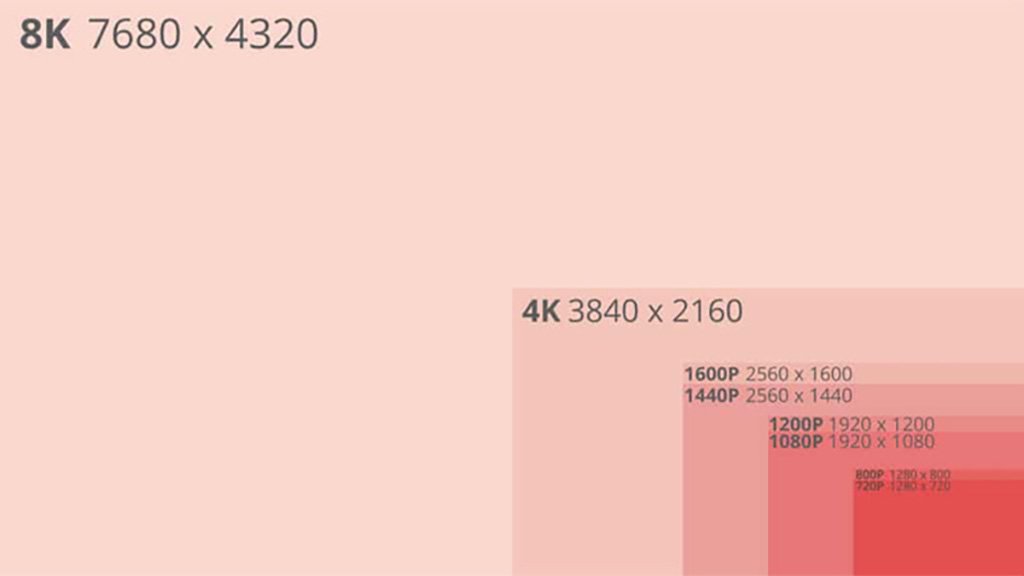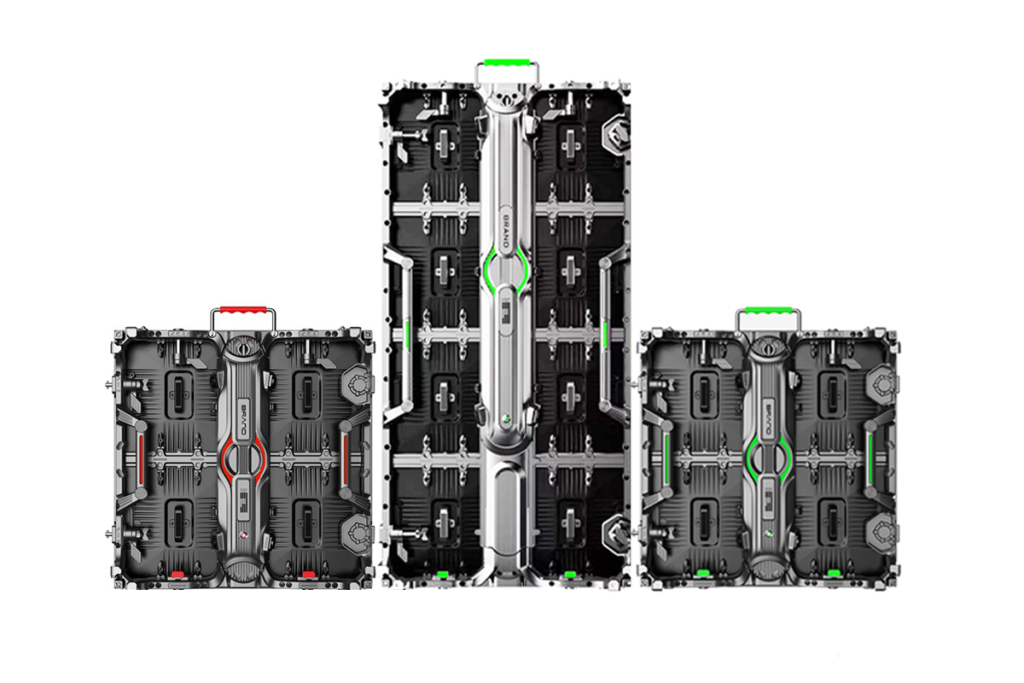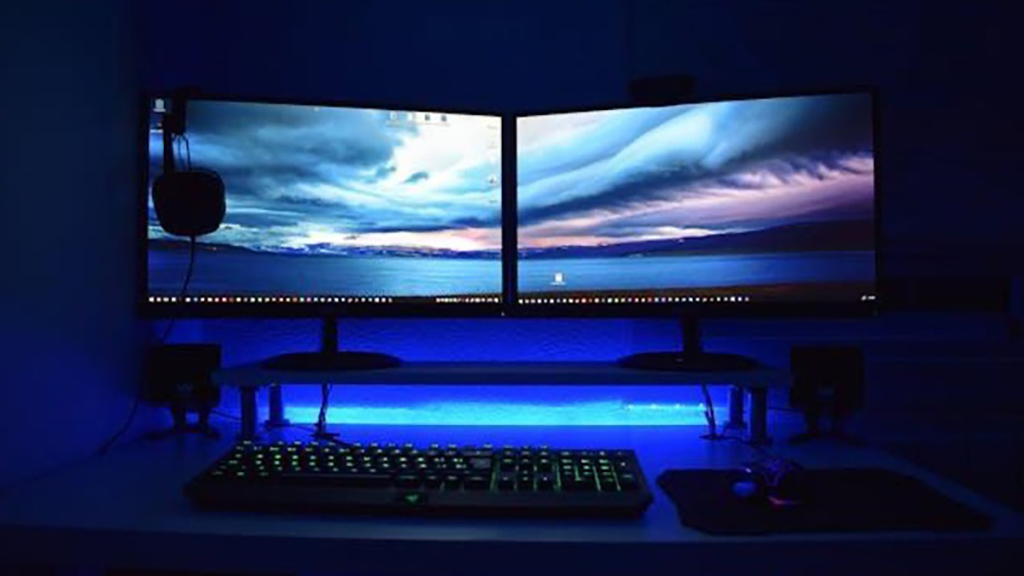Have you ever wondered what makes the monitors of professional gamers and editors so captivating? It’s all about the monitor resolutions. With so many available options available in the market, finding the right one feels overwhelming.
This guide aims to simplify the process by providing a clear overview of different resolutions and their impact on your viewing experience.
This guide aims to simplify the process by providing a clear overview of different resolutions and their impact on your viewing experience.
1. What Does “Monitor Resolution” Mean?
To have a clear picture of monitor resolution and how it impacts the viewing experience, it’s crucial to first understand the foundational terms. “Resolution” refers to the number of pixels that combine to make up the display on your monitor.
It is usually represented by the product of two numbers, such as 1280 × 720. Here, the first number indicates the number of pixels horizontally, and the second one represents the number of pixels vertically.
“Pixels” are the smallest unit of a digital image or a tiny dot of colour and their density which is often measured in pixels per inch (PPI) — determines how sharp and clear the image appears on the screen.
The higher the density, the crisper and clear the display will be because higher pixel density means that the pixels are packed more tightly. The monitors that have higher pixel density display more information on the screen due to which you can visualize sharper images and detailed visuals, which eventually elevates the whole viewing experience.
Another crucial term to understand monitor resolution is “aspect ratio” as it directly affects the viewing experience and the functionality of the display. Basically, it is the ratio of the width to the height of the screen.
The standard aspect ratio is 16:9, which is widely used in all screens, but ultrawide aspect ratios like 21:9 is also present, which offers an even better viewing experience by offering extra horizontal screen space.
The aspect ratio and resolution are correlated as the higher resolution on smaller screens results in sharper image quality due to higher pixel density, whereas the same resolution on a screen with an ultra-wide aspect ratio will not be that sharp or clear due to the larger area.

2. Types of Monitor Resolutions
Monitor resolutions are broadly categorized into three types which are:
1). Standard Definitions
- HD (720p): 1280 × 720
HD refers to high-definition resolution with a width of 1280 pixels and a height of 720 pixels. It is an entry-level display in HD monitors and is often found in older televisions, low-cost monitors, and smaller screens.
They are sufficient for watching standard definition content and affordable too if you’re considering a price perspective, but on larger screens, lower pixel density can be noticed easily.
- Full HD (1080p): 1920 × 2080
Full HD or 1080p offers a width of 1920 pixels and a height of 2080 pixels, providing a sharp and crisp viewing experience with good image detail. It is a standard resolution for many streaming channels and games nowadays because of its balanced quality and performance.
However, it provides a better picture quality than 720p, but in comparison to higher resolutions like 4K, it’s still far behind.
- Quad HD (1440p): 2560 × 1440
Quad HD (1440p) with 2560 pixels in width and 1440 pixels in height, offers 4 times better picture quality and detailing than HD. Due to its clarity and detail, many gamers and video editors use monitors and screens of this resolution.
Compared to full HD, it requires more powerful hardware for operation but not more than 4K Ultra HD. So, it’s a cheaper option than 4K that can provide a top-notch visualizing experience.
- 4K Ultra HD (2160p): 3840 × 2160
4K Ultra HD offers four times better detailing and picture quality than full HD, with 2840 pixels in width and 2160 pixels in height. Its exceptional pixel density and detailing make it ideal for professional video and photo editing, high-end gaming, and watching 4K content.
It is becoming a new standard for higher-resolution televisions and monitors, but the only barrier is that high-end hardware is required for operation. Furthermore, optimization of the software to 4K resolution is also required to make the most of this resolution.
- 8K Ultra HD: 7680 × 4320
8K Ultra HD provides 4 times better picture quality and detailing than 4K and features a width of 7680 pixels and a height of 4320 pixels. In most cases, it is used in professional applications and on large display screens like jumbotrons because of its unmatched clarity and sharpness.
However, it is quite expensive, and not much content is available to match the compatibility of this much higher resolution. Moreover, it is very demanding on hardware so it can’t be standardized at this moment.

2). Widescreen and ultrawide resolutions
- Ultrawide HD (UWHD): 2560 × 1080
Ultrawide HD features a width of 2560 pixels and a height of 1080 pixels, giving it an aspect ratio of 21:9. The expanded horizontal workspace and enabling the multiple windows view without overlapping makes it suitable for immersive gaming, multitasking, and cinematic experiences.
This type of resolution is beneficial where a wider field of view is required. However, due to less vertical screen space, it is not ideal if a lot of vertical real estate is required.
- Ultrawide Quad HD (UWQHD): 3440 × 1440
Ultrawide Quad HD has a width of 3440 pixels and a height of 1440 pixels, giving more horizontal workspace than the Ultrawide HD. Like the Ultrawide HD, it’s not suitable for a workstation that requires more vertical space.
3). Specialized Resolutions
- 5K: 5120 × 2880
5K resolution offers more detail than the 4K resolution with 5120 pixels in width and 2880 pixels in height. It provides extremely sharp images and videos thereby used in top-notch monitors for professional photo and video editing.
- 6K: 6144 × 3160
6K resolution offers a significant increase in detailing than 5K because of 6144 pixels in width and 3160 pixels in height. It is also used in professional settings, mostly by photographers and video editors, because of its unmatched clarity.
- DCI 4K: 4096 × 2160
The 4096 pixels in width and 2160 pixels in height of DCI 4K resolution make it ideal for digital cinema and video production. It provides a wider aspect ratio than the 4K resolution, but due to the specific requirements for hardware and software upgrades, it is not as widely used as the 4K resolution.

3. How to Choose the Right Monitor Resolution?
With multiple available options for resolution, finding the one that matches your requirements might be a daunting task. But no more, as this guide will equip you with the factors that you should consider before making a purchase.
- Assess your needs
Before making a purchase, it’s crucial to understand which task you will be using your monitor for. For everyday tasks like browsing, office work, and streaming, a Full HD (1920 × 1080) is sufficient.
But if you are a pro gamer or a professional video producer or editor, you might require Quad HD or 4K Ultra HD resolution screens for better image clarity and color accuracy. Similarly, if you are someone whose work demands multitasking, an Ultra-Wide Monitor with Ultrawide HD or Ultrawide Quad HD resolution is more suitable.
- Compatibility of resolution with hardware
It’s crucial to ensure that your hardware settings like graphics card, system, and connectivity options are compatible with the resolution. Higher resolution requires a more powerful graphics card to handle the increased pixel count.
So, if you are planning to buy a 4K Ultra HD or 8K Ultra HD monitor screen, you need to update your graphics card as well.
Similarly, check the compatibility of CPU, RAM, and ROM prior to making the most of your higher-resolution screens. Also, check the monitor’s connectivity options and make sure that they match the outputs available on your graphics card.
- Future-proof your system
As monitor technology is still evolving, buying a higher-resolution screen like 8K Ultra HD and beyond will future-proof your system, and you won’t need to invest again soon.

4. LEDSINO: Your Spot to Find the Best LEDs
Now that you’ve determined the ideal monitor resolution for your needs, it’s time to bring your vision to life. LEDSINO is your premier destination for cutting-edge LED display solutions.
From fixed installations to flexible displays, we offer a wide range of options to suit any project or space. Whether you’re enhancing your business with captivating digital signage or creating an unforgettable event experience, our expert team is dedicated to delivering exceptional results.
Cherry on the top is they also offer rental LED displays so even if you are looking for a temporary solution, LEDSINO is your one-stop-shop.

- 3D Billboards Best Combination
- Energy Saving Display 30% Design
- Ultralight Aluminum Profile Cabinet
- Standard Size: 480×320/960*960mm
- With 3 Years Warranty and 5% Spare Parts

- Hard Connection, No Need Cables
- Front Service Magnetic LED Module
- Can Removable Back Power Supply Box
- Optional Curved Lock and Bevel Cabinet
- Have 3 Years Warranty and 5% Spare Parts
5. Final Words
Choosing the right monitor resolution can feel like deciphering a complex code, but it doesn’t have to be. By understanding the core differences between the various options, you can make an informed decision that enhances your viewing experience.



